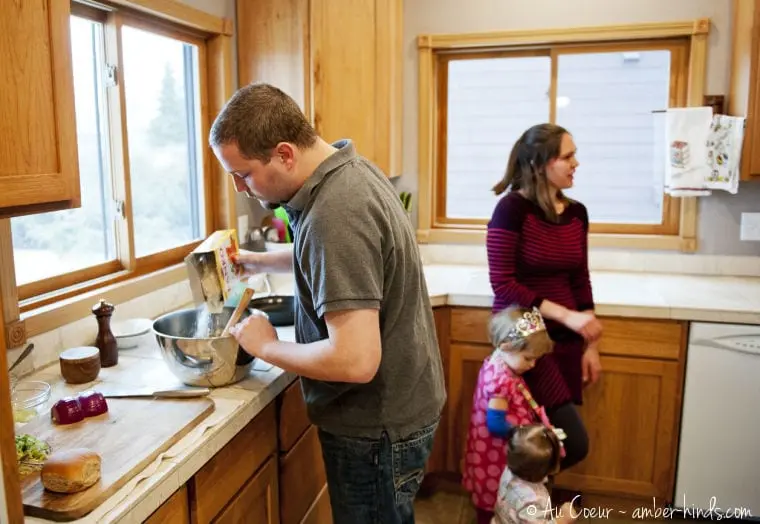
I’m catching up with my end of the year work and realized I never wrote a final post for our Food Stamps Challenge. It also just so happens that today we were in the newspaper; the Gillette News Record ran a story about our challenge, along with some pictures of Chris cooking (taken by Daniel Brenner).
If you are interested in reading it, I uploaded a PDF of the article here. (By the way, I forgot to mention a couple of weeks ago my blog was written about in the Gillette News Record (being in the paper twice in one month is how you know Gillette is a small town…). That article, about local food bloggers, can be read here.)
As far as the challenge went, we ended up doing much better than we thought we would. For the month of December, excluding the one free pass date night, we spent $388.16 on food, which was significantly under our $4/ person/day budget ($4 x 4 people x 31 days = $496). I’ll be the first to admit that I was surprised at how easy this was. There were some sacrifices but if you look at the list of what we bought, you’ll see that not once did we have to resort to ramen, peanut butter, and canned vegetables. We did use some things we already had, but I wouldn’t put that at more than $40 or $50 extra dollars.
On our SNAP budget, we still bought only organic dairy and cage-free eggs. A lot of our produce was organic. We spent the money ($19!!) on REAL maple syrup rather than the cheap high-fructose corn syrup concoction most people buy. I was able to bake three dozen cookies as a donation to P.E.O./the Parade of Homes. And though we did not eat those cookies, we still had a dessert/treat every week, like Nora’s special request for banana split ice cream cones

with homemade fudge, strawberry, and pineapple sauces, yum!
Don’t get me wrong, we did sacrifice during the challenge and we did make some pretty significant changes, it just didn’t require us to be under-nourished or eat junky food.
The biggest change came after I went out and priced our staples at the two main grocery stores.
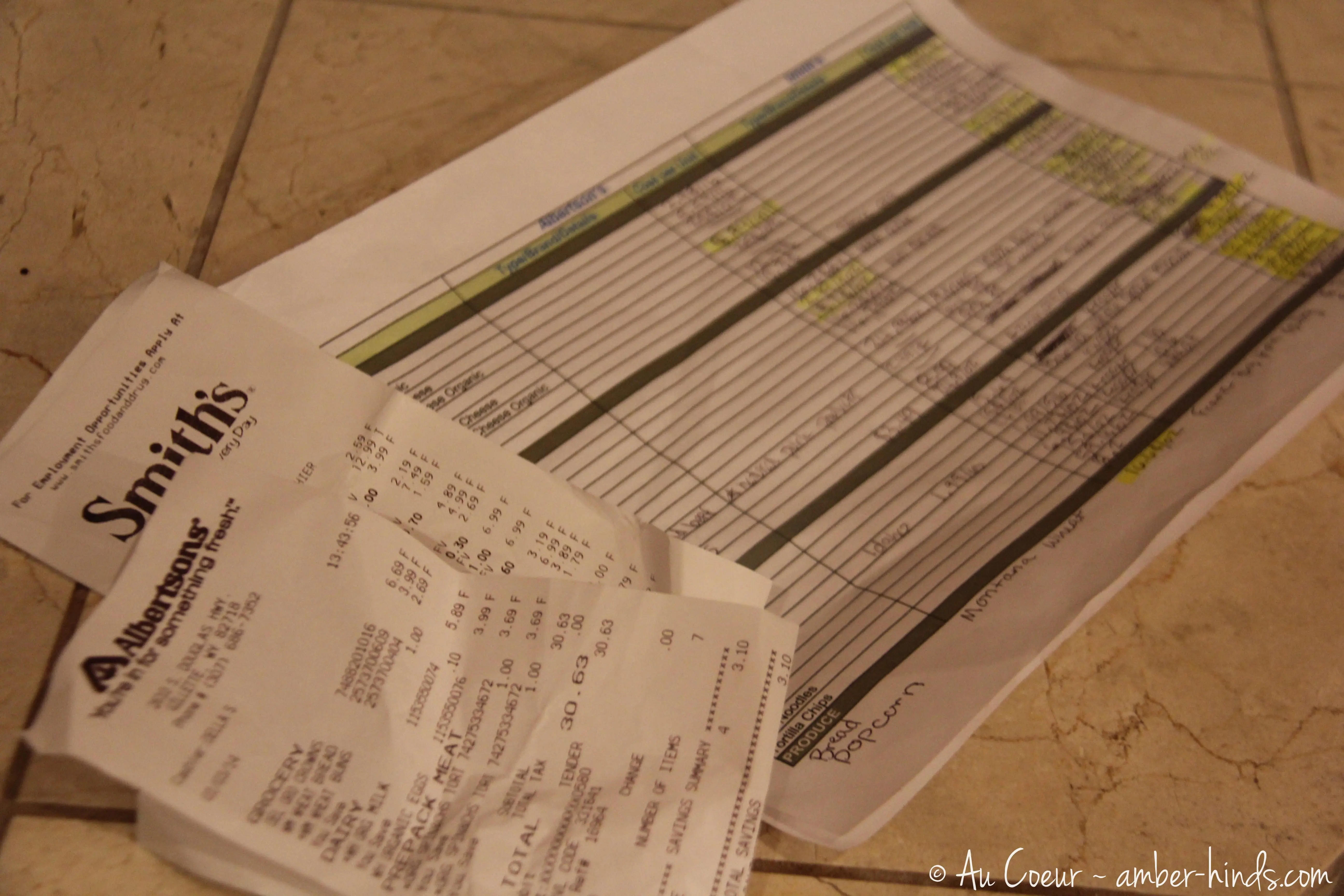
I realized that I had been shopping at the wrong store. I started shopping both stores instead of one to get the best deals in town (Chris did not always do this if he went shopping on his own) and we switched from shopping completely at Albertsons to shopping mostly at Smith’s.
For the sake of the budget, we gave up things like fancy cheese and a lot of convenience foods, such as baby food pouches I was buying for something quick to feed/entertain Zara while I was cooking dinner or otherwise occupied. Chris cut his meat consumption down to once per week, and tried to curb his tendency to snack.
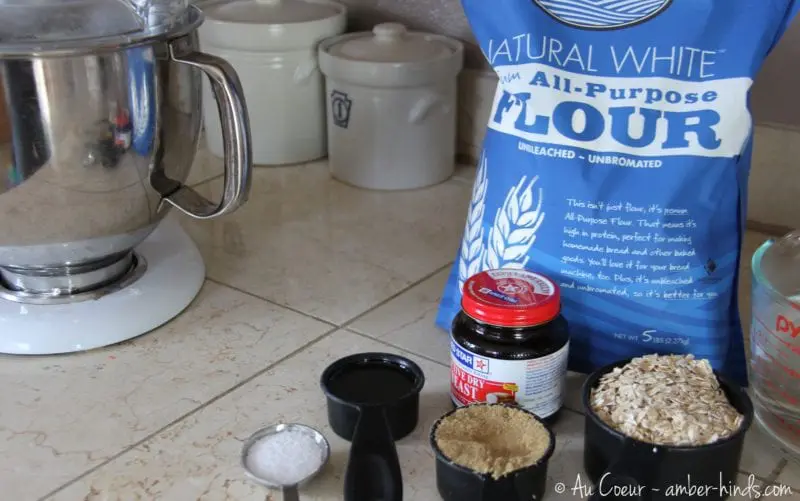
I’m almost ashamed to admit the biggest change… before December came around, we were spending sometimes upwards of $150 per week in restaurants. If I’m being honest, eating out was one of our biggest monthly expenses. When we moved to Gillette, we were in the position of having a lot more expendable income between Chris’ increased salary and the lower cost of living, and we used a big part of it on eating out for convenience (convenience is all it really was considering how bad most of the restaurants are in this town). With the SNAP Challenge, we really had to cut back on going to restaurants out of laziness. I’ll admit, there were moments that I sort of hated that, but at the same time I’m glad that it made us get back into the kitchen and go back to the basics — like when I ran out of bread and instead of going to the store to buy more, we used what we had on hand to bake some.

When we lived on Nantucket I never bought bread. Never. But for some reason I really don’t know, I didn’t go back to baking my own bread after we got settled. Until I did this as part of the challenge, I had forgotten how much I love baking my own bread…perhaps that’s something to get back to in the new year?
There were a few instances last month when I ran out of an ingredient and had to get creative. Once I was out of butter, but wanted to make an apple pie to feed friends we had invited over for an impromptu dinner (black bean soup and dill rice with cheese, sour cream, onions, and jalapenos as topping choices), so I ended up substituting some canola oil and yogurt in the pie crust. It turned out fine, though not as flaky as a butter crust so I probably wouldn’t do it again unless in a similar pinch. Another time, I needed to make cookies for a cookie swap but didn’t have eggs so I used yogurt instead, and those turned out to be the best sugar cookies I have ever baked. (Once I get a chance to remake them, I’ll try to share a recipe.) And, of course, a lot of creativity was required the week that I couldn’t go grocery shopping because we had spent nearly all our budget eating out at restaurants down in Cheyenne.

I wouldn’t say that we had a ton of variety over the month. We saved money by buying the largest unit (with the lowest per unit price) of each food item, which means there were a lot of repeats. There were a ton of black beans, and I mean a ton — we might have eaten them four or five days out of every week. Rice and potatoes were common. Breakfast all month was a choice of oatmeal, plain yogurt, or oatmeal mixed with plain yogurt. Frozen peas were a staple for the kids, and since I had canned tomatoes over the summer many meals had a tomato component. Lentils were a fairly regular staple, too.
Most of our meals were fairly simple (especially if I was cooking them), but we also tried to use spices, sauces, and toppings to make meals using the same ingredients seem different, for example:

roasted sweet potato and cauliflower over rice, fried tofu and scallions with soy sauce and sriracha (not on the kid’s)
vs.

sweet potato, cauliflower and rice, but this time with black beans, monterey jack cheese, and salsa. In some ways it was the exact same meal, but changing up the sauce/toppings made it feel completely different.
When the reporter asked me what my biggest takeaway from the challenge was, I told her I was most surprised by how easy it was for us to eat real food and stay so far under budget. I keep hearing over and over in the media about how one of the challenges for low-income families is being able to afford real food…that it is cheaper to buy pop and chips and the like than it is to buy vegetables, but after doing the SNAP Challenge I am honestly mystified as to how that can be true. We never once bought “cheap calories” or fake food and we were always feeding our family for less than $100 per week. The one week that I went over budget was the one week I let Nora pick out a bunch of snacks in an attempt to stop her from eating chips before I got out of bed in the morning, which tells me that it’s the snack food and convenience foods that are expensive, not real, raw ingredients. Last week, for example, I spent $98 on groceries and this was what I got:
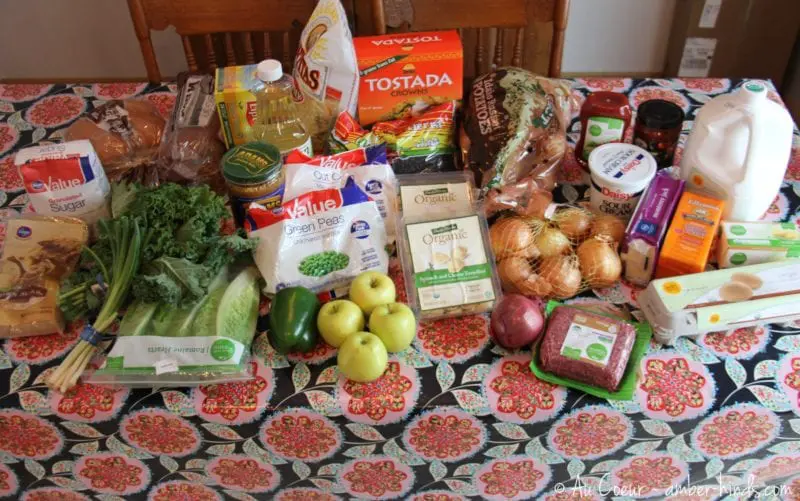
All real food. Lots of organic food. A few splurges like the ravioli and taco bowls. And several items that will last us more than one week: that amount of milk, butter, sour cream and cheese will usually last our family two weeks; the oil, sugar, onions, potatoes, frozen peas and corn, black beans, ketchup, peanut butter will last us three or more weeks. (We always have “carry overs” because I buy the biggest containers for the most savings over time. We had veggies left from the week before plus some staples so there were things I did not have to buy but that we ate last week.) Having seen this first hand really makes me wonder where the information (myth?) about junk food being cheaper is coming from. It makes me think people would benefit from more education on scratch cooking as a way of saving money and eating healthier.
Overall, I am glad we did the SNAP challenge, mostly because it helped us get our spending back under control. We are food people; we’ll always spend more on food than others might because we take so much pleasure in it, but it was good for us to remember that there are sometimes better places to spend our money than at a restaurant just because we feel too lazy to cook. Doing the challenge has also gotten me more interested in the education aspect, and Chris and I have been brainstorming ideas about ways we might be able to get more information out there about eating real food on a budget.
I’d love to hear what you think about all this! Leave me a comment and let me know what your grocery spending looks like. Do you think I’m right about real food being affordable or am I missing something?
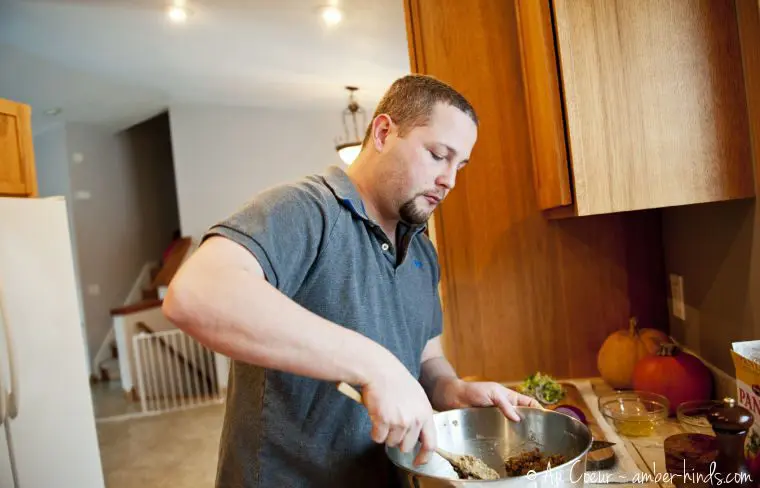
Leave a Reply